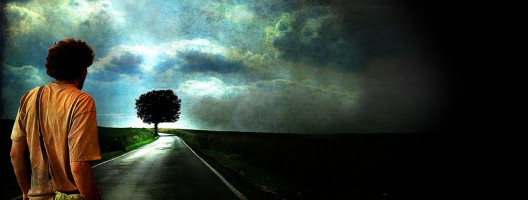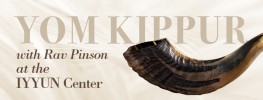Who Are We?
Reaching a Deeper Understanding of Self
Who are we? And what constitutes our beingness?
This is the most essential of all existential issues. To begin to discover who we are let us start by examining that which is the most apparent, and most manifest, ours body. In truth, to many people the physical physic is a major component in their self – evaluation and value. The better and more beautiful their bodies appear the more confident they are, and visa versa. But what is the body? In its widest definition the body can be viewed as a collection of cells working in harmony to form a larger unit we call body. Simply and candidly put; the body is nothing more than a grand total of some one hundred fifty pounds of protoplasm that we can see, feel, and touch, and maneuver to do as we desire.
But can this be the real you?
More pointedly, towards which body part can we point too and accurately say that if we lose that physical property we will become less of who we are now. Say  a person loses a limb, a hand or foot for example does that person in any way become ‘less’ the person he was prior to the injury? Certainly not, so then, what is the real you? If you are not defined by your arms, legs, toes and fingers than why assume that you are the sum total of these individual fragments.
For argument’s sake, one can still insist that indeed we are the sum total of all the parts of the body. Individually the body is seen as an assemblage of loose parts but as one unit they become you and I. To counter this line of reasoning we need to contemplate the fact that the substance of every human being’s body, even a healthy and robust one are continuously being replaced. At a sub-nuclear level the elements that make up our atoms, the quarks and gluons, are perpetually being annihilated and recreated, so we are in fact never the same body as even a moment ago. As odd as it may seem, ninety-eight percent of the atoms in your body were not there a year ago. Your skin, for instance is renewed every month, your stomach lining every four days, and the surface cells that actually contact food every five minutes.
Being that the body is ceaselessly being altered and remade it would seem odd to acquire a sense of identity and selfhood from that which wavers and is unstable, thus the body on its own is somewhat ruled out. The body is ephemeral by its very nature. Even the brain, the storage house of all experiences and knowledge is in a state of continued flux. As such, the challenge becomes to discover is that which is lasting, permanent, and unchangeable; that which exists as the background and also the thread that runs through all of life, and the ‘thing’ that experiences the various changes one encounters throughout life.
Additionally, from the fact that we can feel and are aware of body is the greatest confirmation that we are not body; that which can be felt is not the feeler as that which can be observed is not the observer. We cannot be that which we are conscious of. When observing some object or thinking of it, you cannot be that object as you are separate from it. If you think about your body it means that something separate from it is doing the thinking. So while we are not our bodies, and it is merely a part of us, who are we?
In the quest for self-discovery the challenge becomes to locate and identify the experience’r and the feeler, and not the manifestations, as the experience or the feeling. And ‘what’ is that? The soul. Our soul, is the unchanging that registers the changing, the continuous that observes the discontinuous, the uninfluenced that informs the influenced. As the body’s cells are constantly being modified and changing so are our emotions, thoughts and feelings, but the you within us, the essential self  remains the same. The I within is eternal. Everything else comes and goes, but our ‘I’, the feeling of being alive, when not identified or blended with anything such as body, thought, or feeling, is always the same, never shifting and never modified.
Soul is who we are; it is the part of us that is not temporal or spatial housed in a three dimensional reality, nor is it subjective or dependent of the externals.  It is the deeper ‘I’ that is independent of environmental influence or physical identity. It is the internal I; the I that was there when you were young and said “I am young†the I that was there when you grew a bit older and said “I am middle aged†and the I that is there when you said “I am old.†The perennial I, the soul. The soul is the deeper inner Self which incorporates all levels of beingness, including the small surface i of selfhood. It is the ultimate of all reality and the true I of existence.
From times of antiquity man in his search for ‘self’, has come to describe that unchangeable divine property within in various names, ranging from the soul, the psyche, the light, anima, sarira, naf, to the more modern terms like, the force, our center or ground of being, life energy, yet, for the most part they describe or wish to describe the same underlying pulsating reality. The soul, as we tend to call it is a spiritual unique manifestation, with a distinct individual ‘personality,’ and it is through the lens of our ‘individuated’ soul energy that we come to experience life. The path toward self-actualization and fulfillment is found in this discovery; the unearthing and living in accordance to the ‘finite’ spark of the divine that is distinctly made present in our own lives. The fullness of the I of the world, the infinite is revealed beautifully in the individual finite I-ness of self.
Essentially, our soul is not something we possess but who we are. It does not belong to the person rather it is the person. The soul is the higher self. It is the self of our potential and possibility, the part of us that stands above ego, selfishness, aggression and resentment. The soul is the background of our being, the light that masters our thoughts, emotions and actions, and effectively the whole of life.
The soul is the observer of life, the essence deep within that views life and witnesses our life unfold. Certainly, the known cannot be the knower. If you know your thoughts than you cannot be your thoughts. If you know your passions, emotions, desires, you cannot be that either. An important medieval philosophical/ethical text, attributed to the twelve-century French Rabbi, Rabbeinu Tam, writes that the soul is the knower of the known. In other words, the soul is the small voice beyond the mind that tells the conscious mind to think, feel or act.
Anyone who has ever dabbled in meditative techniques, or for that matter in the philosophy and mechanics of the mind knows that the mind appears to have a mind on its own, and there are levels beyond levels within the mind itself. When a person tells himself to think a particular thought it is one level of mind telling the more apparent level to think. And yet, having this awareness tells us that there is still a deeper level of mind that experiences this consciousness. This mental exercise can literally extend itself to no end, nonetheless, at its deepest, it is the essence of Self – the only I there really is who governs and instructs the I of small self.
Take a moment and try to be aware of the wall in front of you. Now, be aware of that level of mind that is aware of the wall. Then go a little further and try to be aware of that which is aware of that which is aware. You can apparently do this exercise infinitely until you reach a point where you realize that there is a part deep within that is, as some tend to call it, the absolute self, or the pure witness. This can never truly be grasp because it is what grasps. It can never truly be understood because it is the understander, it cannot be known on an intellectual level, for it is the knower of knowledge.
In it’s highest deepest and most pristine form the soul, the higher self is part of the divine I, part of the reality where the knower and the known are one of the same, as the Rambam — Maimonides ‘describes’ the Ultimate and Unconditional Beingness. It is part of a reality where the experience and the experiencer the observed and the observer are one and the same. Rooted in a ‘place’ beyond duality, polarity, separation or contextualization.
As the creator who defies and transcends human logic, the soul as well being part and an individual expression of this truth embodies the paradoxical and its ‘entity’ is oxymoronic, at least to the human small mind constricted reality. The soul is both infinite and finite in its properties and expression. As challenging as it may be to intellectually grasp the soul is simply a finite sliver of the infinite, a holographic particle of infinitude. Perhaps this conception violates our way of thinking, and it does so because the brain is basically a binary instrument. For the brain it’s either up or down, left or right, 0 or 1, but never  both at once, but this is only a limit to the physical brain which has difficulties navigating or interacting with a universe that allows for contradictory coexistence. On a simple level this means that though each soul is rooted and sourced in genuine oneness, nonetheless, as it emerges, while it still sparkles with infinitude it also becomes quite distinct, unique, and descends as the individual soul to embody one particular human form.
Pulsating within each of us is a Self that is uniquely us. Each person has distinctive unmatched and unparalleled characteristics of soul personality. In the afterlife, the celebrated Chassidic sage, R. Zusia of Anipoli said, I will not be asked “why were you not like Moses?’ rather, the question will be “why were you not like Zusia?†Why did you not reach your own full potential? No two people are alike spiritually, and as physical representation of the spirit even physically. Everyone, in his own way is exceptional and unique; each soul demands to be expressed and experienced differently. Every human being has a unique spiritual vocation to be fulfilled that only that person can fulfill it.
Our individual and particular way we experience life is a result of the individuality of our soul. Not only do we see the world around us through the lenses of our own distinct soul, but the world around us is also affected and influenced by the uniqueness of our soul. Whoever and whatever a person connects with emotionally or intellectually, physically or mentally he indelibly imprints his ‘personality’ of soul on those people and those events. Every relationship we entertain becomes colored and tainted – hopefully for the better with our personality and soul individuality.
Scientific exploration and advancement has come a long way. Today we have computers, which are essentially artificial intelligence that can solve mathematical riddles and win chess games against the best and brightest of human chess players. Yet for all that A.I. can do it still lacks a human soul. A self-enclosed machine lacks the ability to go outside itself and judge. A.I., can perhaps know how to react and what to do in a certain situations, but it will never know why it reacts this way and not in another way. It is deficient of what some philosophers call “qualia†incapable of having pleasure, desire, anxieties or hope. True, it can carry out brilliant arithmetic calculations and can play a wicked game of chess, sill, while it plays does it know anything of playfulness? Does it get excited by wining or agitated when losing? Does it worry about its next move, or regret its previous ones?
Extending this idea a bit further we come to the realization that the various ‘things’ that make us human and demonstrate our humanity, primarily our emotions are experienced by each of us quite differently. No, it is wrong to assume that “all happy families are alike.â€Â Happiness as sadness or for that matter the whole gamut of human emotions and feelings are unique, singular, and felt by each of us in our very own distinct way.
It should only be added, though at its core the soul is unchangeable and it is the element of permanence that runs through life, the manifestations of soul are certainly not static, stagnant, and non-fluid, and clearly they are not a ‘thing’, as in a noun. The more dense levels of soul, those aspects that are more present as everyday consciousness are continuously expanding via our life experiences. The more outer dimensionally related parts of soul are in a perpetual state of flux and growth.
True, what defines us is our soul, yet another valid truth is that we are a psychosomatic being, comprised of soul and body. Part of who we are is a reflection or a result of the body we possess. On some level, we are who we are because or despite the bodies we posses. Take for example short people; some short people tend to be more introverted and timid because of their physical contour, and some short people act quite the opposite, in despite, and ‘suffer’ from what is referred to as a Napoleon complex. Mentally, the shaping of ones’ internal personality maybe forged by physical appearance; heavy thin, tall short, black white. How they look, or perceive themselves to look affects the way they feel about themselves, for better and for worse.
In all honesty, whether our personality is a result or despite physical appearance and a facelift or the like will make us feel differently, or alternatively, our physical presentation is a manifestation of personality and on its deepest level a physical materialization of the soul, depends on us. It reflects whether we choose to live life from the inside- out or from the outside- in. People who live from the inside out, harmoniously, and in an integrated manner their physical form will be an accurate representation of their spiritual form, the body will reflect soul. By its very nature, the body is a physical representation of the inner pattern of the soul that animates it, the question is only, whether we live in concurrent to that level or not. When we do live from the inside-out and cultivates a healthy internal outlook the result may in fact be apparent on our physical posture.
All and all, the body is not a prison house for the soul. The body is not, by its created nature an alien abode that oppresses or stifles the spirit, rather “the bodies of the upright are holy.†The creators infinite presence is to be found everywhere, from the sublime to the mundane, from the spiritual to the physical, even in a coarse matter such as corporal existence. The body is, at least in its natural and original form  a physical expression of the spirit that animates it and gives it life.
Body and soul can and should be the best of friends. When the body and soul work in unison, when they are both engaged in positive acts and thoughts then the body can be a vehicle to experience freedom, when the converse occurs the body becomes a prison house, an unfriendly place instead of a friendly one.
Genuine integration and wholeness is achieved when we come to view, both the body and soul in the light of theirs respected purposes. Spiritual equilibrium is attained when there is harmony and symmetry between the various aspects of our personality; when the physical self/body expresses the spiritual Self/ soul, and when the body is seen not as a hindrance or shackle biding the spirit, rather a vehicle for the most powerful of soul expression.
The self is a beautiful synthesis of body and soul, our ego and transcendence, the finite matter and the infinite spirit, the temporal material and the eternal spiritual, and a realized selfhood can only be complete when we are fully align and create a perfect harmony between all aspects of our selves, when we are fully present, and our I-ness is effusively lived on all levels of existence. When we do so, the ‘perfect self’ is expressed, and we become fully aware and realize how our i is one with The I of all reality and all existence.







